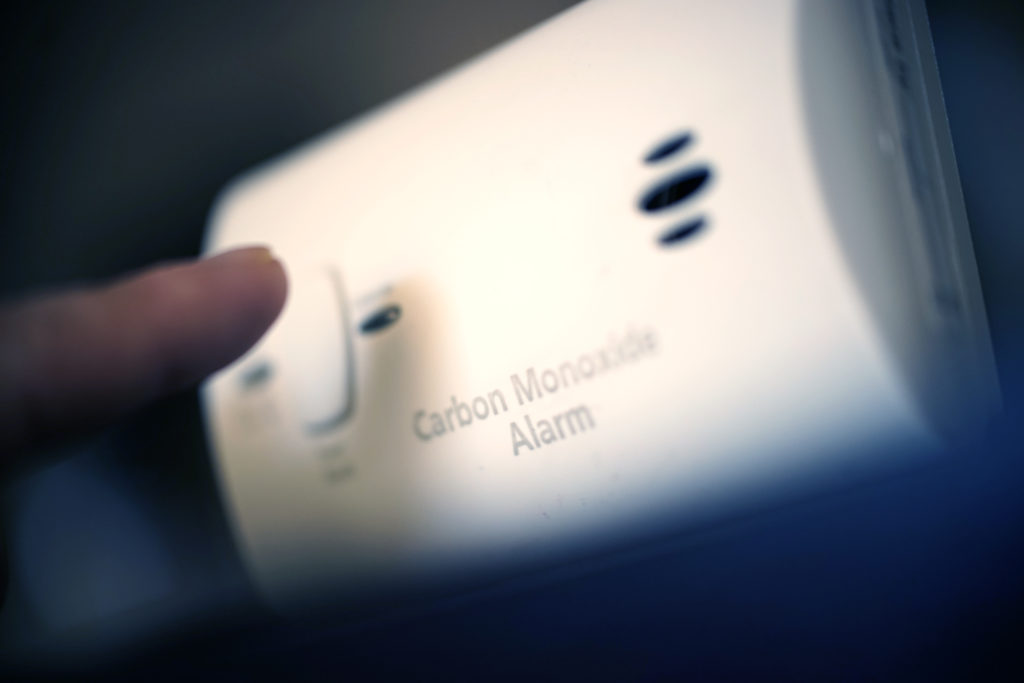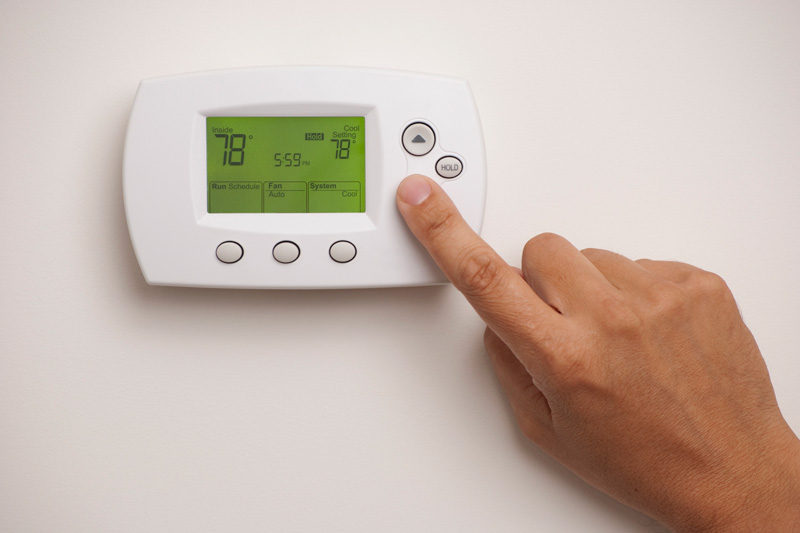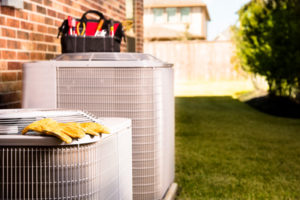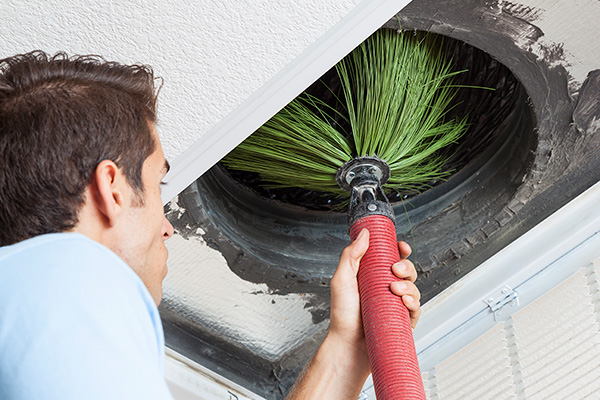Holiday Home Safety Tips
Posted on by WestAIR Heating & Cooling
 The holidays are exciting, filled with gift shopping, decorating, cooking, hosting the extended family, or traveling to a Christmas getaway. But don’t overlook small details that are mishaps waiting to happen. From the ten-year-old string of decorative lights wrapped around your banister to the poisonous poinsettia plant sitting on your dining room table, the festivities bring many hazards to your home. Have an enjoyable and accident-free Christmas season with these holiday home safety tips:
The holidays are exciting, filled with gift shopping, decorating, cooking, hosting the extended family, or traveling to a Christmas getaway. But don’t overlook small details that are mishaps waiting to happen. From the ten-year-old string of decorative lights wrapped around your banister to the poisonous poinsettia plant sitting on your dining room table, the festivities bring many hazards to your home. Have an enjoyable and accident-free Christmas season with these holiday home safety tips:
Electrical threats
Before you hang up electric decorations, inspect them for damage. Look for cracked sockets, loose connections, or frayed cords. An exposed wire could light up your Christmas tree in flames. Never overload outlets or connect more than three strings of electrical lights. They could trip a breaker or start a fire.
Fire
You should always check your fireplace and chimney before you light it. Santa may not be peeking down at you from the roof, but there could be debris blocking smoke and creating a fire hazard. If you have a real Christmas tree, water it daily, and don’t put it too close to the fireplace. Keep combustibles at least three feet from heat sources and never block exits in case of a fire.
Decorating danger
In a quest to outdo last year’s Christmas décor, many homeowners take decorating to new heights, quite literally. If you plan to hang sparkling ornaments or lights in high places, don’t climb or stand on furniture. Use a proper ladder and have someone support the base if you need to hang decorations beyond your normal reach.
Theft
Try not to order anything online to be shipped to your home if you plan to be away for the holidays. Thieves can easily run up and snatch retail packages on a porch. Don’t leave large displays of holiday gifts near windows where passersby can easily see them. If possible, ask a neighbor to keep an eye on your home while you are away so you don’t have to worry about holiday theft.
Cold weather
If you plan to be away for the holidays, take steps to prevent frozen pipes. Basement, attic, and garage pipes are most susceptible to freezing and bursting in cold temps, causing significant water damage in a matter of hours. Make sure to close your garage door when you leave to keep the cold air out. Open kitchen and cabinet doors so the warmer air throughout your home will circulate and reach the pipes in your walls. Set the thermostat to a temperature no lower than 55 degrees.
WestAIR Heating & Cooling offers programmable thermostats with vacation-hold settings so you can easily stay in control of your heat while you are away. We can install a gas fireplace so you don’t have to worry about the decorations, Christmas tree, or wrapping paper falling into the hearth and catching fire. Contact us to learn more about your heating options this holiday season.
This entry was posted in Winter and tagged Garage, Heating, Holidays, HVAC, Thermostat, Winter
10 Signs You Should Replace Your Furnace
Posted on by WestAIR Heating & Cooling
If you’re like most homeowners, you want to get the most out of your furnace and avoid the cost of replacement for as long as possible so you make sure it’s outlived its parts. When is it time to say goodbye to your furnace and buy a newer model? The excessive amount of money you put into utility bills and repairs for your old furnace may indicate it’s time for an upgrade. Though expensive, a newer model can increase your home comfort, efficiency, savings, and safety in the long run.
Signs you need a new furnace
The average furnace will last 15 to 20 years if it is installed properly and regularly serviced. But you’ll have to get a new one eventually, and a newer model can save up to 20 percent in energy. Here are 10 signs that you may need to replace your furnace:
- If you’re calling for repair services too often.
- If your furnace repair costs 50 percent or more than it would to replace.
- If it’s over 15 years old.
- If your furnace is making loud sounds (rattling, popping, humming, or screeching).
- If your furnace is short cycling.
- If your heating bill has increased even though you aren’t changing the thermostats.
- If you set the thermostat, but your home is not heated evenly.
- If you notice soot around the registers. Older furnaces spew dust, dirt, or rust particles.
- If there’s a crack in the heat exchanger. Carbon monoxide could be leaking and poisoning your home.
- If you notice rust, cracks, or corrosion on or around furnace components.
Why upgrade my furnace now?
With new technology, you can easily and conveniently regulate the temperatures in your home and be more comfortable, while saving energy. Buying a new furnace can be a planned home improvement or a panic replacement. Don’t wait until it breaks down in the freezing cold of winter. In your desperation for a warm house, you may not take the proper time to research and choose a furnace with the best deals.
But first, have an HVAC technician evaluate your entire heating system. Maybe it only needs a simple repair, like a new filter or thermostat. The WestAIR service team is here to help you make a sound decision so you can prevent costly breakdowns and save money. When it comes time to replace your furnace, our HVAC technicians will help you choose the right make and model for your home. We recommend Rheem® furnaces for their energy savings, advanced features, and reliability. Contact WestAIR today for more information.
This entry was posted in Furnace and tagged Energy efficiency, Energy savings, Furnace, Heating, Replace furnace, Rheem, Save money, Thermostat, Tune-up, Winter
Carbon Monoxide Awareness
Posted on by WestAIR Heating & Cooling
 Carbon monoxide (CO) is an invisible, odorless, and tasteless gas, making it difficult to know when you’ve been exposed. Known as the silent killer, carbon monoxide poisoning is the most common fatal pollutant in many countries. As the weather turns cooler and we turn on our heating systems, it’s important to increase your awareness and take extra precautions.
Carbon monoxide (CO) is an invisible, odorless, and tasteless gas, making it difficult to know when you’ve been exposed. Known as the silent killer, carbon monoxide poisoning is the most common fatal pollutant in many countries. As the weather turns cooler and we turn on our heating systems, it’s important to increase your awareness and take extra precautions.
What Causes Carbon Monoxide Poisoning?
Burning fossil fuels produce carbon monoxide when oxygen levels are too low to create carbon dioxide. Gas, oil, wood, and coal burning appliances like boilers, central heating systems, water heaters, dryers, and generators are all sources of CO. Smoking cigarettes increases CO levels by 10-40 parts per million. Inhaling fumes from paint thinners and products containing methylene chloride, especially in poorly ventilated areas, causes carbon monoxide to metabolize in the bloodstream. Cars running in a closed garage can produce a deadly amount of carbon monoxide in only ten minutes! Some factory and industrial workers have exposure to carbon monoxide as well.
Carbon Monoxide Levels at Parts Per Million
The concentration of carbon monoxide is measured in parts per million (PPM), and effects from exposure vary.
- 0 PPM – Fresh air.
- 10-24 PPM — Possible long-term exposure risk.
- 35 PPM — OSHA standard for maximum exposure during an 8-hour work day.
- 100 PPM — Causes headaches after 1-2 hours.
- 200 PPM — Causes dizziness, nausea, fatigue.
- 400 PPM — Life-threatening after 3 hours of exposure.
- 800 PPM — Death within 2-3 hours of exposure.
- 1600 PPM — Death within 1-2 hours of exposure.
Symptoms
Inhaling CO turns your hemoglobin into carboxyhemoglobin, which prevents your blood from absorbing oxygen. Be aware of the symptoms of carbon monoxide poisoning in case you are in an area without a working alarm.
- Dizziness
- Headache
- Confusion
- Disorientation
- Nausea
- Blurred Vision
- Memory loss
- Loss of consciousness
Risks from CO Exposure
Anyone can be at risk of carbon monoxide poisoning. Prolonged exposure to CO can lead to seizures, coma, and death. Treatment requires administering 100 percent oxygen, and risk of death reduces as the oxygen brings the HbCO count down to less than 10 percent. Carbon monoxide poisoning is considered an anoxic brain injury, causing long-term neurological problems like memory loss, confusion, and poor coordination.
To prevent carbon monoxide poisoning, install at least one carbon monoxide detector on each level of your home. Check and replace your batteries twice a year and upgrade your alarm every five years. Schedule annual maintenance on any gas, oil, or coal appliances. Don’t use grills or generators indoors and keep your home and garage properly ventilated.
Contact us to learn more about the safety of your heating or ventilation equipment and to schedule your annual maintenance.
This entry was posted in Garage,Health Tips,Heating,Tips and tagged Carbon monoxide, Carbon monoxide poisoning, CO, Fossil fuels, Gas, Heating, HVAC, Poison
Are Radiant Infloor Heating Systems Worth the Cost?
Posted on by WestAIR Heating & Cooling
Have you ever been to a home or building with heated floors? Even on a chilly winter evening, your feet feel warm. The air around you feels comfortable, not drafty. Some homeowners find heated floors a necessity, while others think they’re an expensive and frivolous feature. Let’s consider the pros and cons of radiant infloor heating.
Advantages
Energy Efficiency
Traditional boiler and forced air systems heat the nearest area of space. The radiator can have an internal temperature between 159-167 degrees Fahrenheit just to heat up a room. By the time the warm air makes its way to the other side of the room, the air cools below the programmed temperature. Depending on the location and size of the room, a radiator or forced air can create inconsistent temperatures.
Infloor heating covers the entire floor. Heat rises, so no matter where you walk, the room will reflect the correct temperature. Furthermore, the source typically heats up between 80 – 90 degrees. Best of all, radiant heat can save 15 to 40 percent on energy bills because of its efficient technology.
Minimal Maintenance
Did you know you should have your furnace checked once a year, as well as change your air filter multiple times a year? Service visits costs add up, especially if your heating system needs replacement parts. There are no maintenance costs with radiant infloor heating, and some brands guarantee their product for decades!
Space
Boiler systems and forced air take up space. Boiler radiators reduce physical space in a room and can create challenges with furniture placement. Forced air systems make use of ceiling, wall, and floor space for ducts and vents. With infloor heating, the flooring conceals all equipment, allowing for an open, spacious feel.
Comfort
We all have experienced the shocking feeling of bare feet on a cold floor during the winter. With radiant infloor heating, your feet will feel cozy all winter long, even without socks.
Versatility
Infloor heating works with all floor types: wood, stone, tile, carpet, laminate, and more.
Safety
Radiators can pose safety hazards and cause injuries such as burns and cuts. In addition, forced air reduces oxygen and the thermal circulation kicks up dust, which can aggravate allergies, asthma, and other respiratory conditions. Radiant heat keeps air fresh and oxygen-rich and dust out of the air.
Disadvantages
Electric heating installation costs $10 to $20 per square foot. Connecting the system to your power supply adds an extra few hundred dollars to the bill. Another disadvantage—the process takes one to two days to dry, because of leveling compound that tops the thermal mat. Water-based systems cost more than double that of electric heating and require installation during the build phase of a new home. Lastly, radiant infloor heating adds about half an inch to the floor. Experts recommend using insulation boards underneath, increasing height by approximately an inch more.
Many homeowners say that the advantages of infloor heating outweigh the disadvantages, and the cost of installation is ultimately worth it. You don’t need to build a new home to try radiant infloor heating. If it’s time to remodel your bathroom or basement, look into infloor heating for added comfort, improved energy efficiency, and increased resale value.
Contact WestAIR Heating & Cooling to learn more about installing radiant infloor heating.
This entry was posted in Heating,Winter and tagged Floor heating, Radiant heating, Radiant infloor heating
What is Automatic Zoning?
Posted on by WestAIR Heating & Cooling
 Artificial Intelligence. Self-Driving cars. Virtual Assistants. Every day, advancements in technology amaze and inspire us to automate and simplify our lives. So, what’s stopping you from getting smart with your HVAC system?
Artificial Intelligence. Self-Driving cars. Virtual Assistants. Every day, advancements in technology amaze and inspire us to automate and simplify our lives. So, what’s stopping you from getting smart with your HVAC system?
Home Automation
Automatic zoning or smart zoning, a category of smart home technology, allows you to control the temperature of each living space or zone in your home. Your bedroom or living room are primary zones that most people like to set to different temperatures. The issue? Older thermostats read the temperature in the middle of the home. Basements end up feeling cooler while second story rooms become warmer. Automatic zoning uses motorized dampers inside your ductwork that control the airflow to each zone. Select a zone and set a comfortable temperature using your smartphone or other device. The control panel in your HVAC system receives the information from your thermostat to adjust the dampers and temperature to your desired settings. It’s that simple!
New Technology
Zoning your HVAC system is not necessarily new technology but monitoring your setting from a device is. In the past, homeowners installed multiple thermostats or HVAC units to control these systems. Now you can regulate the temperature through one system in one location without ever touching a thermostat. If a room is not in use, automatic zoning reroutes the air to save energy. You can control all these settings with your phone, online, or right on the thermostat. Manufacturers create smart thermostats to sync with your Wi-Fi and easily customize to your lifestyle. Adjust your home’s temperature from anywhere!
Add-on Features
When you install automatic zoning, you can add more features to your heating and cooling system, too.
Fresh Air Intake
Bring fresh air into your home while using your heating or cooling unit.
Air Cleaner
Install an air cleaner to remove pollutants such as dust, pollen, and contaminants throughout the home.
Humidifier
Add a humidifier to make cold seasons more comfortable while preserving your home. Dry air cracks and warps the woodwork and building materials.
WestAIR can create a comfortable atmosphere for any room in your home. Save on energy bills by installing energy efficient automatic zoning. Contact us today to learn more.
This entry was posted in AC,Air Conditioning,Cooling,Furnace,Heating,Indoor Air Quality and tagged Air cleaner, Automatic zoning, Basement, Bedroom, Damper, Ductwork, Energy efficiency, Fresh air intake, Heating and cooling, Home automation, Humidifier, HVAC zoning, Living room, Smart home, Smart thermostat, Smart zoning, Thermostat
How to Improve Indoor Air Quality
Posted on by WestAIR Heating & Cooling
 In some cities, air pollution and smog create major health concerns. But the air inside of your home could contain more contaminates no matter where you live. Changing your living habits and investing in superior equipment will make major improvements to your indoor air quality.
In some cities, air pollution and smog create major health concerns. But the air inside of your home could contain more contaminates no matter where you live. Changing your living habits and investing in superior equipment will make major improvements to your indoor air quality.
Cleaning
If your home contains carpet, use a high-quality vacuum with a HEPA filter to reduce household dust, pet dander, and chemicals. Experts recommend vacuuming at least two times a week. For homes without carpet, sweeping and mopping effectively captures dirt and pollutants. Dry microfiber mops successfully grab dust and allergens as well but don’t require any chemical cleaners. Putting extra care into your cleaning routine will not only improve the look of your home but also the air quality. Think of all the chemicals, fecal matter, and allergens that cling to your shoes or clothing when you enter a building. Taking your shoes off or using a large matt to wipe your shoes can help reduce pollutants as well.
Reducing Toxicity
One of the worst culprits of compromised indoor air quality is cigarette smoke. The smoke contains more than 4,000 chemicals and can increase the risk of asthma, lung cancer, and stroke. Radon poses as another risk for lung cancer, especially in the Midwest where the gas concentrations are high. Radon gas comes from the natural decay of uranium in the ground and leaks through your home’s foundation. Call a professional if your house has not been tested for radon. Toxic particles can come from the products you use to clean, too. Fragrance and household chemicals emit VOCs (Volatile Organic Compounds). You can find VOCs in higher concentrations indoors, and they come with serious health risks. Reduce these chemicals by switching to natural or mild soaps or cleaners. Essential oils, vinegar, and baking soda can become effective DYI cleaners, too.
Air Support
Adding plants like dracaena, peace lilies, and spider plants improve indoor air quality and attractiveness inside your home. Air purifiers or air cleaners are even more effective at creating fresh and clean air. An air cleaner can capture 98% of airborne particles circulating through your home. We recommend these heating and cooling add-ons for people with asthma, allergies, or chronic illnesses. Depending on the MERV or HEPA rating, filters capture dust, pollen, mold, pet dander, pollutants, viruses and bacteria in the air. Dust mites and mold also thrive in moisture, so investing in an air exchanger or dehumidifier to use in the summer months will help as well. If your house smells musty or already shows signs of mold, you should invest in a dehumidifier.
Would you like better indoor air quality?
Contact WestAIR Heating and Cooling for more information on dehumidifiers and air cleaners.
This entry was posted in Indoor Air Quality and tagged Air cleaner, Air purifier, Allergies, Asthma, Bacteria, Breathe better, Cancer, Chemicals, Cigarettes, Clean air, Cleaning, Dehumidifier, Dust, Fragrance, HEPA, Home purifier, MERV, Mold, Natural alternatives, Pet dangers, Plants, Radon, Smoking, Toxic, Vacuum, Viruses, VOCs
How to Reduce Indoor Humidity
Posted on by WestAIR Heating & Cooling
 In the Midwest, we feel the weather to the extremes – below zero and dry in the winter to 90+ degrees and humid in the summer. For those summer months, many of us cool our homes with some sort of air conditioning, but the humidity still sticks around the house. Extra moisture makes the air feel warmer and damages your walls, floors, furniture, and cabinets. You can effectively reduce indoor humidity with three different products, but which one will work best for you?
In the Midwest, we feel the weather to the extremes – below zero and dry in the winter to 90+ degrees and humid in the summer. For those summer months, many of us cool our homes with some sort of air conditioning, but the humidity still sticks around the house. Extra moisture makes the air feel warmer and damages your walls, floors, furniture, and cabinets. You can effectively reduce indoor humidity with three different products, but which one will work best for you?
Portable Dehumidifier
These units plug into any room and are suitable for homes with poor air circulation or no ventilation. Spaces like the basement, kitchen, or bathroom become susceptible to mold. Dishwashers, dryers, and showers add extra heat and moisture to your home. Portable dehumidifiers are the smartest solution for rooms that smell of must or feel damp and stale.
Whole House Dehumidifier
This system works best for old houses that use ductwork for heating and cooling. Older houses are prone to leaks and mold. If you often find condensation on your walls or you’ve had problems with mold before, you should consider a whole house dehumidifier. If you or a family member has asthma or chronic respiratory issues, humidity can aggravate your symptoms. Install a whole house dehumidifier to reduce moisture and improve your health.
Air Exchanger
An air exchanger has two channels of air flow, ventilating your home with fresh, filtered air. One channel pulls outside air into the home, while the other pushes stale air out. This exchange removes humid air or pollutants. The air exchanger works seamlessly with your heating & cooling equipment to improve air quality. If you own a newer home and want a constant supply of fresh air, consider adding an air exchanger to your HVAC system.
Contact WestAIR Heating and Cooling to learn more about reducing humidity, improving indoor air quality, and installing an air exchanger in your home.
This entry was posted in AC,Air Conditioning,Cooling,Energy Savings,Indoor Air Quality and tagged Air, Air cleaner, Air exchanger, Allergies, Asthma, Basement, Bathroom, Breath better, Condensation, Dehumidifier, Hot weather, Humid, Humidity, Indoor humidity, Kitchen, Mold, Portable dehumidifier, Summer, Toxic, Whole home dehumidifier
Money-Saving Tips to Keep your Home Cool this Summer
Posted on by WestAIR Heating & Cooling
Have you switched your thermostat over to cool yet this spring? When the weather turns hot and sticky, you may be tempted to crank the a/c. Give yourself some peace of mind and follow these money-saving tips to keep your home comfortable this summer.
A/C Maintenance
Avoid an expensive breakdown during summer’s scorching hot days. HVAC technicians are working their peak seasons, so wait times could be longer than you’d like. Instead, schedule your a/c tune-up to keep your air conditioner working at top performance. Technicians will clean parts covered with dust and debris, fill coolant levels, tighten electrical connections, and more. You should always change your air filter every month during cooling (and heating months), too!
Thermostat
Program your thermostat this summer to the warmest comfortable temperature, and even warmer while you are away. However, while you’re away, don’t turn your air conditioner off on extremely hot days. The materials in your home will retain heat, so keeping the room cooler will make it easier for your air conditioner to run. On colder nights, you can turn off your cooling unit and open the windows. Then close them right away in the morning to trap the cooler air inside.
Windows
Use curtains and shades during the day to block direct sunrays from heating your home. Exterior awnings can reduce extra heat by up to 75 percent on west-facing windows! It’s also important to caulk or weather strip any drafty windows.
Air Circulation
Maintain maximum efficiency by inspecting your air ducts for any leaks. Keep cool air circulating in the right areas by closing doors and vents to any rooms not in use. Using an exhaust fan in bathrooms or kitchens also removes heat and moisture from your home, which helps prevent wall damage and mold.
Appliances
Save money on your electric and water bills by less frequent use of appliances that add heat to the house. Avoid using the oven by preparing cold meals or grilling outside on hot days. Air-dry your dishes and laundry. Your water heater is another culprit for extra heat, so try taking shorter and cooler showers on warm days as well.
Plant trees
Planting tall trees can cool your house naturally. Suburban and urban areas are warmer than rural ones because of the heat absorbed by roads, buildings, and parking lots. Planting tall trees to block windows can save you up to 35 percent annually on energy costs while keeping your home cooler and giving your yard extra curb appeal.
Contact WestAIR Heating & Cooling for your annual a/c tune-up and personalized suggestions to keep your home comfortable this summer!
This entry was posted in AC,Air Conditioning,Cooling and tagged A/C maintenance, A/C tune-up, A/C tune-up, Air circulation, Air conditioner maintenance, Air conditioner tune-up, Air ducts, Air filters, Comfortable, Cooling system, Energy efficiency, Exhaust fan, Grilling out, Heating and cooling, Hot days, Humid days, HVAC technician, Plant trees, Summer days, Thermostat, Tune-up, Window curtains, Window shadows, Window tips
A/C Tune-up – Why Should You, When Should You?
Posted on by WestAIR Heating & Cooling
Summer is just around the corner and having a broken a/c is no joke on those scorching hot days.
Why You Need an A/C Tune-up
Give your air conditioner a head start this summer by cleaning the key areas where dust and dirt accumulate. You can reach maximum efficiency by scheduling a thorough tune-up. Maintenance involves a comprehensive cleaning of condenser coils, maintaining coolant levels, calibrating your thermostat, tightening electrical connections, and inspecting the ductwork and performance.
Cleaning
- Condenser coils
- Condenser drain
- Air filter
Testing
- Coolant levels
- Thermostat calibration
- Supply and return temperature differential
- Compressor
Inspecting
- Electrical wiring
- Bearing lubricant
- Safety devices
- Refrigerant
- Indoor coils
- Fan blade
- Test capacitors
- Service valves
- Ductwork
- Blower motor and belt
Regular maintenance will almost always cost less than a repair or a replacement and can decrease your electricity bill. Your cooling unit lasts longer – sometimes twice as long as a neglected one. And to top it off, missing regular tune-ups can void your warranty.
When to Service Your Air Conditioner
Spring is the best time for an annual air conditioner tune-up. Summer becomes one of the busiest seasons for technicians with repairs and emergency service. Waiting until a serious problem develops with your a/c can mean delays in service or additional costs for emergency repair.
Is it Time to Consider a New Cooling System?
Sometimes, it’s worth upgrading your air conditioner system for something that’s more efficient and requires fewer repairs.
If your electricity bill keeps going up without any changing variables like extra hot weather, you might be ready for a new air conditioner. You also need to consider how old your a/c is – most last 10 – 15 years. If your system is unreasonably noisy or dusty, this could indicate that there are leaks in the ductwork or the system isn’t the right size for your home. Lastly, an efficient air conditioner should remove humidity from your home. Any trouble with humidity and inconsistent temperatures where vents are located also signifies a problem.
On our next visit, we can give your current air conditioner an energy assessment to see you need to tighten or clean a few parts or if it’s time to upgrade to a new cooling system. We are proud dealers of Rheem air conditioners – top-quality, innovative products with the latest technology.
Contact us to schedule a service today!
This entry was posted in Air Conditioning,Cooling and tagged A/C maintenance, A/C tune-up, A/C tune-up, Air conditioner maintenance, Air conditioner tune-up, Condenser coil, Cooling system, Heating and cooling, Rheem, Thermostat, Tune-up
Air Duct Cleaning & Maintenance
Posted on by WestAIR Heating & Cooling
Clean air ducts help keep dirt, dust mites, and mold out of the air of your home. Turning on a contaminated or clogged heating and cooling system can cycle these potentially harmful particles into the air you breathe and decrease indoor air quality. How do you know if you need an air duct cleaning service?
Check with your local HVAC technician to find any visible mold or excessive dust and debris inside your ducts, or if there has been a recent infestation of rodents or insects.
Keep your ducts clean by practicing proper home habits.
• Change your furnace and air conditioner filters regularly.
• Check to make sure you use the right air filters that fit your equipment.
• Make sure your HVAC equipment is efficient and regularly maintained.
• Dust and vacuum your home regularly. Vacuuming can increase the amount of dust in the air, so it’s worth upgrading to a high efficiency (HEPA) vacuum cleaner.
• Seal off supply and return registers during home renovation or construction.
• Maintain your humidifier to prevent mold inside the home.
• Repair leaks and water damage promptly.
• Make sure ducts are sealed properly and insulated in attics and crawl spaces.
• Invest in an Aprilaire Air Cleaner to reduce the amount of dust circulating around your home. Air cleaners trap 98 percent of visible dust and irritating particles, and 97 percent of airborne pollen. Attached to your furnace, the filters remove matter through the blower fan and return clean air back into the rooms of your home.
Air duct cleaning is not an annual service, but might be needed after some time, especially if you have pets, smoke, sensitive allergies, respiratory needs, or live in a humid environment.
At WestAir Heating & Cooling, we use a specialized Rotobrush cleaning system to clean air duct systems. This “source removal” cleaning method utilizes powerful vacuums and brushes to dislodge any debris that stick to the surface.
If you think you might need your ducts cleaned or worry about your indoor air quality, contact us for more information.
This entry was posted in Duct Cleaning,Health Tips,Indoor Air Quality and tagged Air cleaner, Air cleaning, Air ducts, Air filter, Air filtration, Air quality, Allergies, Aprilaire, Clogged ducts, Cooling, Dander, Debris, Dehumidifier, Dirt, Dirty ducts, Duct cleaning, Duct maintenance, Ducts, Dust, Heating, Humidifier, HVAC, Mold, Moldy ducts, Particles, Pets, Pollen, Rotobrush, Vacuum
Subscribe to Our Blog
With RSS feeds, you don't have to visit our site everyday to keep up to date. Simply subscribe to our blog via RSS or Email and our posts will come to you!
Search Blog Posts
Categories
Archives
- April 2024 (1)
- February 2024 (1)
- January 2024 (1)
- February 2023 (1)
- January 2023 (1)
- December 2022 (1)
- November 2022 (1)
- October 2022 (1)
- September 2022 (1)
- August 2022 (1)
- July 2022 (1)
- June 2022 (1)
- May 2022 (1)
- April 2022 (1)
- March 2022 (1)
- February 2022 (2)
- December 2021 (1)
- November 2021 (1)
- October 2021 (1)
- September 2021 (1)
- August 2021 (1)
- July 2021 (1)
- June 2021 (1)
- May 2021 (1)
- April 2021 (1)
- March 2021 (2)
- January 2021 (1)
- December 2020 (1)
- November 2020 (1)
- October 2020 (1)
- September 2020 (1)
- August 2020 (1)
- July 2020 (1)
- June 2020 (1)
- May 2020 (1)
- April 2020 (1)
- March 2020 (1)
- February 2020 (2)
- November 2019 (1)
- August 2019 (2)
- June 2019 (1)
- May 2019 (1)
- April 2019 (1)
- March 2019 (1)
- February 2019 (1)
- January 2019 (1)
- December 2018 (1)
- November 2018 (1)
- October 2018 (1)
- September 2018 (1)
- August 2018 (2)
- July 2018 (1)
- May 2018 (1)
- April 2018 (1)
- March 2018 (1)
- February 2018 (1)
- January 2018 (1)
- December 2017 (3)
- November 2017 (2)
- October 2017 (2)
- September 2017 (2)
- August 2017 (1)
- July 2017 (2)
- June 2017 (3)
- May 2017 (2)
- January 2017 (4)
- November 2016 (1)
- September 2016 (3)
- July 2016 (2)
- June 2016 (2)
- May 2016 (4)
- April 2016 (1)
- March 2016 (2)
- February 2016 (2)
- January 2016 (1)
- August 2015 (1)
- July 2015 (1)
- June 2015 (3)
- May 2015 (1)
- July 2014 (2)
- June 2014 (1)
- April 2014 (1)
- March 2014 (1)
- February 2014 (2)
- October 2013 (1)
- May 2013 (1)
- March 2013 (1)
- February 2013 (1)
- August 2012 (1)
- July 2012 (2)
- June 2012 (2)
- May 2012 (2)
- March 2012 (1)
- February 2012 (1)
- December 2011 (1)
- November 2011 (1)
- October 2011 (1)
- September 2011 (1)
- August 2011 (1)
- June 2011 (1)
- May 2011 (1)





 Subscribe
Subscribe Subscribe
Subscribe